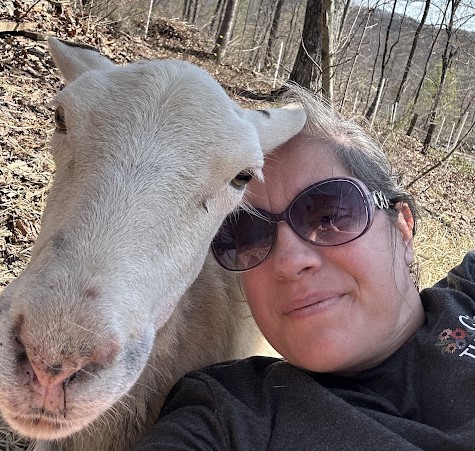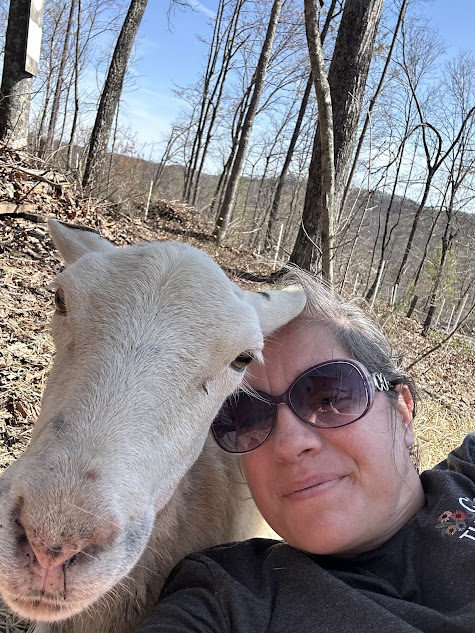

How to Live a More Self-Sufficient Life Without a Farm
Self-sufficiency has always been a dream of mine. There is a feeling that comes with suppling for your own needs that you can’t get from going to the store. Even before I had the space, I had the dream—I just needed the right opportunity to make it happen. I spent many years waiting for the right opportunity and right partner to turn my dream into reality. Enter my amazing husband, who is 100% on board.
One of the most common things I hear on my Facebook page is, “I’d love to homestead, but I don’t have enough space.” I use to believe this line until I was able to real dig in and learn about small things I could do anywhere. The truth is: you don’t need tons of land to start living a more self-sufficient. Homesteading is a mindset, a way of life. Whether you’re in an apartment, a suburban backyard, or just starting with a few potted plants, you can take steps toward greater independence.
So, let’s dive into how you can homestead—right where you are!
8 Easy Ways to Start Living a More Self-Sufficient Life
1. Grow Your Own Food (Even in Tiny Spaces!)
Think you need a giant backyard to grow your own food? Nope! You only need sunlight, water, and soil. Windowsills and balconies can be transformed into mini-gardens, and you’d be amazed at how much you can grow in small spaces. Pro tip: The Dollar Store has some surprisingly awesome budget-friendly planters—check out my top picks!
If you have a little extra space, consider raising rabbits. Pound for pound rabbits are the easiest and quickest return on investment ever. Birth to butcher is typically four months with the right breed of rabbit. They don’t take up much room, and they provide both meat and fantastic fertilizer for your plants. Not into rabbits? No worries! Herbs and veggies thrive in shallow pots—check out this video to see which ones work best.
2. Turn Your Kitchen Scraps into Garden Gold (Composting 101)
Composting in small spaces might sound intimidating, but once you get started, it’s a game-changer. The key? A solid setup! Here are some awesome compost bins I found on Amazon that are perfect for small spaces.
To make compost magic happen, you need a mix of:
- Green materials (kitchen scraps like veggie peels, fruit scraps, coffee grounds, and grass clippings)
- Brown materials (twigs, dried leaves, paper, and cardboard)
The sweet spot is a 3:1 ratio of brown to green. Keep your compost slightly damp—like a wrung-out sponge—and stir it regularly to keep things breaking down efficiently.
🚫 What NOT to compost:
- Processed food, meat, and dairy (trust me, you don’t want the smell!)
- Pet waste (except rabbit manure—it’s black gold for gardens!)
- Diseased plants (to avoid spreading anything nasty to your soil)
Before you know it, you’ll be turning food scraps into rich, nutrient-packed soil for your garden! Want a step-by-step guide? Check out this video for an easy composting plan.
3. Preserve Food Like a Pro
Ever wished you could enjoy summer berries in the middle of winter? Learning to preserve food is like having a secret superpower. Canning, dehydrating, freezing, and fermenting are all great ways to make your food last longer and reduce waste.
Bonus: It saves you money, too!
4. Cook from Scratch (Your Wallet & Waistline Will Thank You!)
This might just be my favorite tip! Cooking from scratch isn’t just about self-sufficiency—it’s also cheaper and healthier. Honestly, I can’t think of a downside.
New to homemade cooking? Don’t stress! YouTube and Pinterest are full of easy to follow recipes and tutorials. Whether you want to bake bread, make your own sauces, or meal-prep like a boss, there’s a guide for that!
Start simple, experiment, and most importantly—enjoy it! Your body (and budget) will be forever grateful.
5. Learn Basic Repair Skills (Save $$ & Feel Like a DIY Genius)
Did you know that learning to fix things yourself can save you hundreds of dollars a year? The best part? You don’t need a degree in handyman-ology.
YouTube and Pinterest have step-by-step tutorials for everything from fixing a leaky faucet to patching drywall. And remember: FAIL = First Attempt In Learning. Mistakes are part of the process, so don’t get discouraged. Every skill you learn makes you more self-sufficient!
6. Get Crafty with Sewing
Learning to sew is a skill that keeps on giving! Not only can you tailor clothes to fit perfectly and repair rips and tears, but you can also turn it into a side hustle. People will pay for custom tailoring, clothing repairs, and handmade products—just saying! Check out this Pinterest board for beginner-friendly sewing tips.
7. Make Your Own Cleaning Supplies (It’s Easier Than You Think!)
Homemade cleaning products = fewer toxins, less waste, and more money in your pocket.
You probably already have everything you need: distilled vinegar + water = an amazing all-purpose cleaner! Want to level it up? Add essential oils for a fresh scent and extra cleaning power. Check out this blog for 9 DIY natural cleaning products you can make today!
8. Reduce Waste Like a Pro
Your new mantra: Reuse. Recycle. Reduce.
Think outside the box when it comes to cutting down on waste. Upcycle old clothes into cleaning rags, repurpose glass jars for storage, and swap plastic wrap for beeswax wraps. Small changes add up!
Final Thoughts
Self-sufficiency isn’t about where you live—it’s about the choices you make every day. Whether you start by growing herbs on your windowsill, sewing your own clothes, or whipping up homemade cleaning products, every step you take brings you closer to a more independent, sustainable lifestyle.
The best part? You don’t have to do everything at once. Start small, have fun with it, and watch your self-sufficient skills grow over time!
What’s one self-sufficient habit you’re excited to try? Let me know in the comments!
